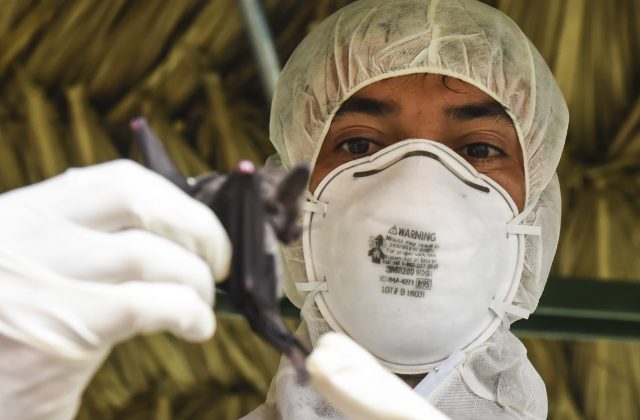By Shelly Miller, Professor at University of Colorado Boulder. On Twitter: @ShellyMBoulder

ISIAQ, the International Society of Indoor Air Quality and Climate is an international, independent, multidisciplinary, scientific, non-profit organization “whose purpose is to support the creation of healthy, comfortable and productive indoor environments.” The ISIAQ Board of Directors and The Academy of Fellows are hosting a webinar series on the spread of COVID-19 and infectious diseases in indoor environments. What an excellent idea and I look forward to the upcoming webinars.
The webinar on March 31 was given by Dr. Yuguo Li, The University of Hong Kong, and Dr. Qihong Deng, Central South University, China, titled: Transmission Dynamics of Coronavirus Disease 2019 (COVID-19) in China and the World: The Role of Intervention.” Below are my notes and what I learned from this webinar.
Nearly all identified COVID-19 transmission in china were indoor transmissions. Many early infections were in healthcare workers but once they started wearing personal protective equipment (PPE), the infections in healthcare workers was negligible.
Respiratory aerosols are thought to play a role in transmission. This paper by Wei and Li is an excellent overview of airborne spread of infectious agents in the indoor environment, and especially take a look at Figure 4, which shows the difference between the droplet-borne, short-range airborne, and long-range airborne transmission routes.
Dr. Li today introduced a new idea of extended short-range airborne transmission. A key here is that poor ventilation and crowded conditions can lead to extended short-range airborne transmission.
This paper from 1979 by Moser et al. illustrates how this can happen (flu was transmitted on a grounded aircraft with inoperable ventilation). A recent case of COVID-19 transmission in WA in which 60 singers attended choir practice in early March, could be an example of extended short-range airborne transmission. Three weeks later, 45 have COVID-19 and two have died. Letters to the editor are pretty perceptive about the airborne transmission that happened in this situation. And while it was clear that the church choir practice was a crowded environment, we do not know if there was poor ventilation – one would need the ventilation rates for that church.
Extended short-range airborne transmission happens in crowds, which is why physical/social distancing has been key to disrupting pandemics such as the Spanish Flu of 1918 or the current pandemic.
This paper by Gao et al (2016) was also mentioned, which showed using modeling that increasing ventilation rates is an effective strategy for airborne disease control in a large city. How to increase ventilation rates? one way is to use natural ventilation in classrooms, offices and homes and even hospitals (yes maybe you should run and open a window right now).
Face masks were also discussed and they can block exhaled breath, which is a good control to begin limiting short-range airborne transmission. So maybe we all need to go out in public with masks, since many of us may be infected and asymptomatic with COVID-19. Healthcare workers must wear N95s and PPE. (Additionally I note that it is a good idea to also wear a mask to protect yourself from infection especially in crowded or poorly ventilated spaces, per this recommendation from Ben Cowling, Hong Kong University.)
We don’t yet have evidence for long-range airborne routes in well ventilated indoor environments. Maybe it can happen in poorly ventilated spaces, but it remains to be seen.
Ventilation and crowding are paired – crowding needs increased ventilation. Mask wearing and hand hygiene are paired. You can not touch your mask and then other surfaces and your face with out potentially spreading the virus. Hand and surface hygiene are similarly coupled.
Advice to an infected person: stay away from others, where a mask, wash hands and increase ventilation in your space. Other recommendations include minimize conversational contact without masks, maintain good ventilation (did I already say this!?) and keep distances from crowding.
What is a good ventilation rate to strive for? This paper recommends 25 liters per second per person.
In the post-pandemic world we need to really reflect on the need for healthy, indoor environments.
Webinar highlights and Presenter bios.
This blog post was originally posted here.